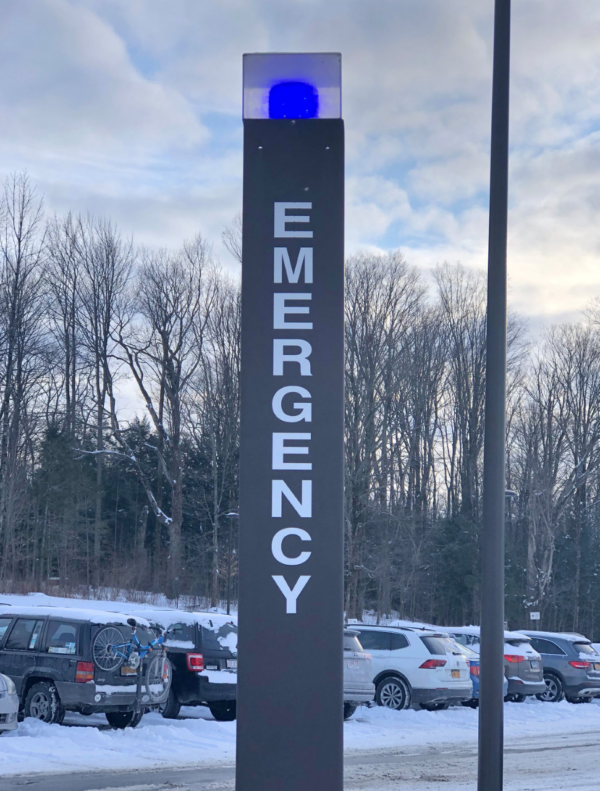
Campus life, whether elementary, high school, college, or corporate are intended to be secure places where people can learn, grow, and work. Campuses around the world, nevertheless, have seen violent incidents and threats, and it seems to be increasing in recent years. As a result, Campuses must prioritize physical security measures to guarantee the security of their instructors, staff, students, and visitors.
Physical security refers to the precautions taken to keep people, assets, and property safe from physical dangers including theft, violence, and vandalism. Access control systems, security guards, security cameras, metal detectors, and emergency response plans are a few examples of the physical security measures that must be implemented in today’s world.
Preventing violent situations is one of the main factors driving schools to prioritize physical security and to look into new technology and new capabilities to keep their campuses safe.
These notorious and not so notorious tragedies have made it clear that campuses of all makes must take proactive steps to stop violence before it starts.
Strategies to stop violence on campuses
Having a thorough security strategy in place is one of the best strategies to stop violence on campuses. Measures like perimeter fence, security cameras, access control systems, and emergency response plans should all be part of an overarching deterrent to such unwelcomed events. To make sure employees, students, and visitors are ready for emergencies, campuses should also hold frequent training exercises.
Physical security measures can aid in preventing violence as well as criminal behavior.
Due to the significant resources, equipment, and most importantly human souls that they house, campuses are frequently targeted by thieves and vandals for theft and damage.
It has become painfully obvious that all schools must prevent criminals from targeting their campuses by putting in place physical security measures like security cameras and access control systems.
Physical security measures
The protection of staff and student privacy is a key factor in why physical security is prioritized in schools. Sensitive data kept by school campuses, like student records and employment information, is frequently a target for cybercriminals. Schools can make sure that sensitive material is shielded from unwanted access by putting in place physical security measures like safe storage spaces and access control systems.
Students and employees might feel safer and more secure thanks to physical security measures.
Students and staff are more likely to be productive and interested in learning when they feel safe. Schools can contribute to the development of a supportive learning environment that fosters academic success by establishing a safe atmosphere.
In order to adhere to legal and regulatory standards, it is also crucial for schools to place a high priority safety and security of those individuals on its campus. To safeguard its students and employees, several nations have laws and regulations in place that mandate schools to
undertake specific physical security measures. If these regulations are not followed, schools risk legal and financial repercussions.
Here are some examples of laws and regulations at the federal and state levels in the United States that mandate schools to undertake safety measures.
‘Jeanne Clery Disclosure of Campus Security Policy and Campus Crime Statistics Act’
The ‘Jeanne Clery Disclosure of Campus Security Policy and Campus Crime Statistics Act’ (Clery Act) requires all colleges and universities in the United States that receive federal funding to have emergency notification procedures, timely warning systems, and annual security reports. This law also requires schools to report certain crimes and security incidents to the campus community and to the Department of Education.
‘Every Student Succeeds Act’
The ‘Every Student Succeeds Act’ (ESSA) requires states and school districts to develop and implement emergency management plans, which must include procedures for responding to natural disasters, fires, and other emergencies. Schools must also conduct annual drills to ensure that staff and students are prepared to respond to emergencies.
The Federal Emergency Management Agency (FEMA) has developed the Guide for Developing High-Quality School Emergency Operations Plans, which provides guidance on how schools can develop comprehensive emergency plans that address all types of hazards, including natural disasters, acts of violence, and other emergencies.
‘Safe Schools Against Violence in Education Act’
The ‘Safe Schools Against Violence in Education Act’ (SAVE) requires all public schools in New York State to develop and implement safety plans, which must include procedures for responding to emergencies, such as natural disasters, acts of violence, and other emergencies.
Th Texas School Safety Center (TxSSC) provides guidelines for schools to develop and implement safety plans, which must include procedures for responding to emergencies, such as natural disasters, acts of violence, and other emergencies.
The California Education Code requires all schools in the state to establish a safe and orderly campus environment. This law requires schools to develop and implement safety plans that must include procedures for responding to emergencies, such as natural disasters, acts of violence, and other emergencies.
Prioritizing physical security can also assist schools in meeting accreditation standards in addition to complying with legal and regulatory requirements. Many accrediting organizations demand that schools have a thorough security plan in place to protect both students and employees. Schools may make sure they achieve these requirements and keep their accrediting status by placing a high priority on physical security.
List of Security firms on college campuses
The leading security firms on college campuses include Allied Universal Security Services ; G4S Secure Solutions; Securitas Security Services; Paladin Security; Universal Protection Service; U.S. Security Associates; Prosegur; Pinkerton; and Blackstone Security Services.
And finally, putting a high priority on physical security can help foster confidence and trust among parents, staff, and the larger community. The community at large wants to know that campuses are taking proactive steps to stop violence and guarantee the protection of both kids and staff. Parents want to know that their children are safe while they are at school.
A campus can prevent violent incidents, deter criminal activity, protect sensitive information, create a sense of safety and security, comply with legal and regulatory requirements, meet accreditation requirements, and foster trust and confidence among parents and the larger community by implementing physical security measures like access control systems, surveillance cameras, and emergency response plans.
As a result, it is essential that campuses make physical security a top priority and a key part of their entire security strategy.

Jay Jason Bartlett is the Managing Editor of Security.World and the CEO of Cozaint Corporation, a manufacturer of security surveillance solutions. Jay has over 40 years in the high-tech industry and over 15 years in physical security. visit: cozaint.com

Cozaint Corporation is a service-disabled veteran owned business that builds software and hardware intelligent surveillance solutions. Physical security kiosks and video surveillance storage systems that deliver 24/7/365 surveillance and peace-of-mind. When you need leading edge physical security solutions, lean on Cozaint.
See more articles on: Cozaint Corporation
Source: cozaint.com
